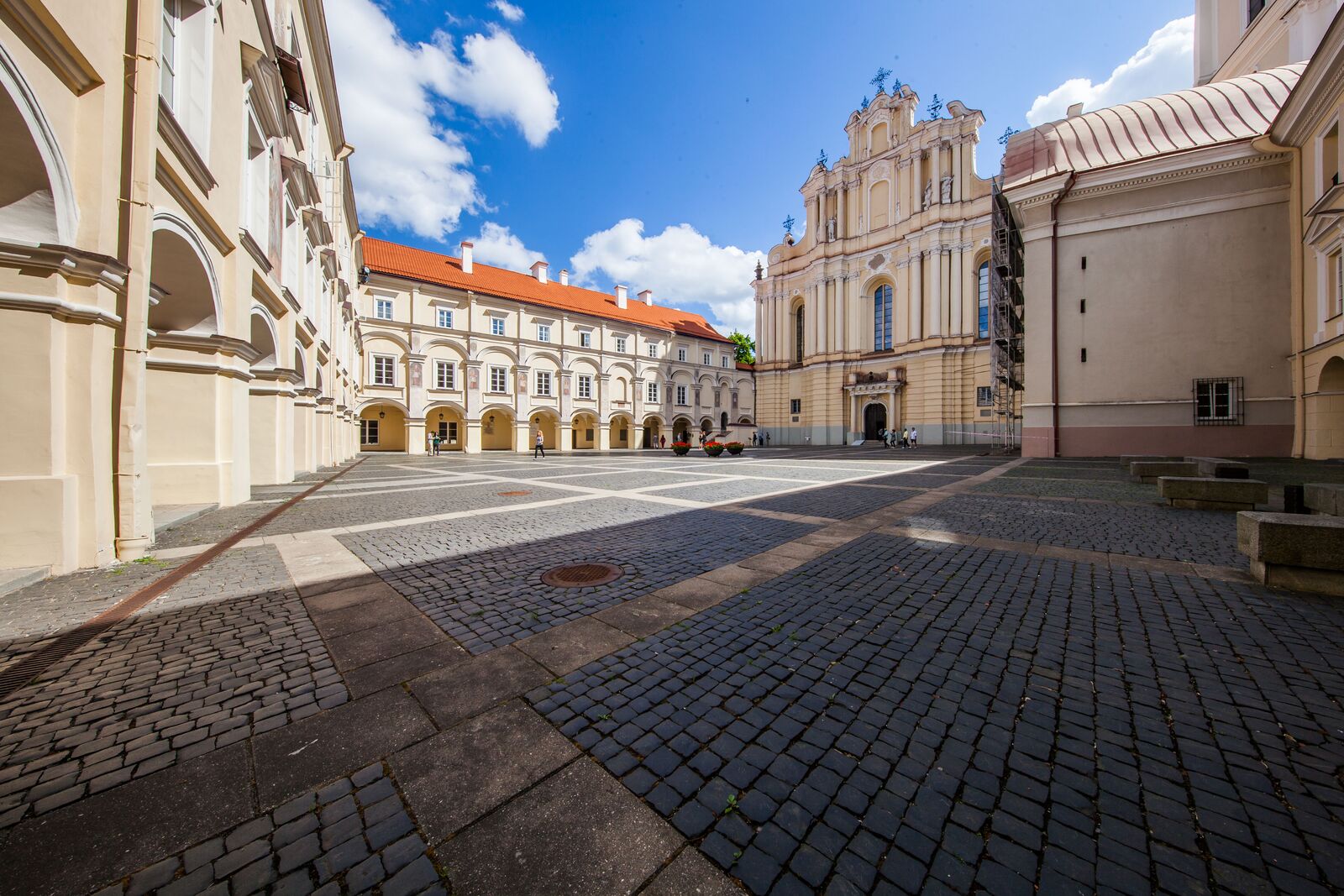This Church is included as part of the following itineraries: Places of Veneration of Our Lady, Jesuits in Vilnius
Bl. M. Sopocko worked in the Theology Faculty of Vilnius University from 1927 to 1945. For a time, while the Church of St. Ignatius was in reconstruction, he celebrated Mass here for the military, and on returning from Juodsiliai, where he hid from the threat of detention by the Germans, he took up residence in the Church’s rectory. During the time of Soviet rule, he organized classes on the catechism for laypeople in the sacristy so that they could clandestinely teach the truths of the faith. He also evangelized Russians who were arriving in Vilnius with the Soviet administrative apparatus. Despite the risk of the authorities taking repressive measures against him, he promoted popular devotion to the Divine Mercy. In 1946, Vilnius Archbishop Mecislovas Reinys, at the request of Bl. M. Sopocko, permitted the first celebration of the Feast of Divine Mercy on the Sunday after Easter at the Church of the Sts. Johns.
The start of the construction of the Church is linked with Lithuania’s Christianization. It was Lithuanian Grand Duke and Polish King Jogaila who in 1386 began work on the building, which King Alexander Vytautas completed in 1426. In 1571 the Church was entrusted to the Jesuit College, which is considered the origin of Vilnius University. Historical circumstances led to more than one change in the function of the Church, though it has always been surrounded by the academic community. The Church was closed in 1948 and during the Soviet era housed a museum of science. It was re-consecrated in 1991 and is again tended by the Jesuits.
Founded in 1579, Vilnius University is one of Central and Eastern Europe’s oldest and best-known schools of higher education. It has significantly influenced scientific and cultural life not only in Lithuania but also in neighboring countries. The Vilnius University ensemble is a unique collection of buildings that took shape in the 16th-19th centuries and reflects the main architectural styles that have prevailed in Lithuania: Gothic, Renaissance, Baroque, and Classicism. The ensemble is known for its 13 small courtyards, the tallest bell tower in the City, and one of Europe’s very first astronomical observatories.
Through the arch of the altar a traditional Our Lady of Loreto statue is visible. It was brought from Italy in 1647, and shortly thereafter it became renowned as miraculous throughout Lithuania and Europe. Students were known to pray by it during their exams. After the Second World War the statue was transferred to the Vilnius Art Museum, later restored, and then transferred to the Church Heritage Museum. The current Our Lady of Loreto statue in Sts. Johns’ Church is a copy of the original, replicated by the restorers. Our Lady of Consolation Chapel, located in the left nave near the main entrance, is one of the six chapels in this Church. In its center there is an altar with an 18th century painting of the Blessed Virgin Mary with Child decorated with metal coverings. The second chapel is dedicated to St. Ann. It is also known as the Chapel of the Immaculate Conception, because its portal is decorated with a painting of the Mother of God in the clouds, surrounded by two Guardian Angels. Nearby in the Body of Christ Chapel (Oginskiai Chapel), the Most Blessed Sacrament is kept, and another painting of the Blessed Virgin Mary holding a Child, is venerated.
September–May
Tuesday–Thursday – 6 p.m. (in a chapel)
Friday – 6 p.m. (for students)
Sunday – 11 a.m., 1 p.m.
June–August
Sunday – 11 a.m.





